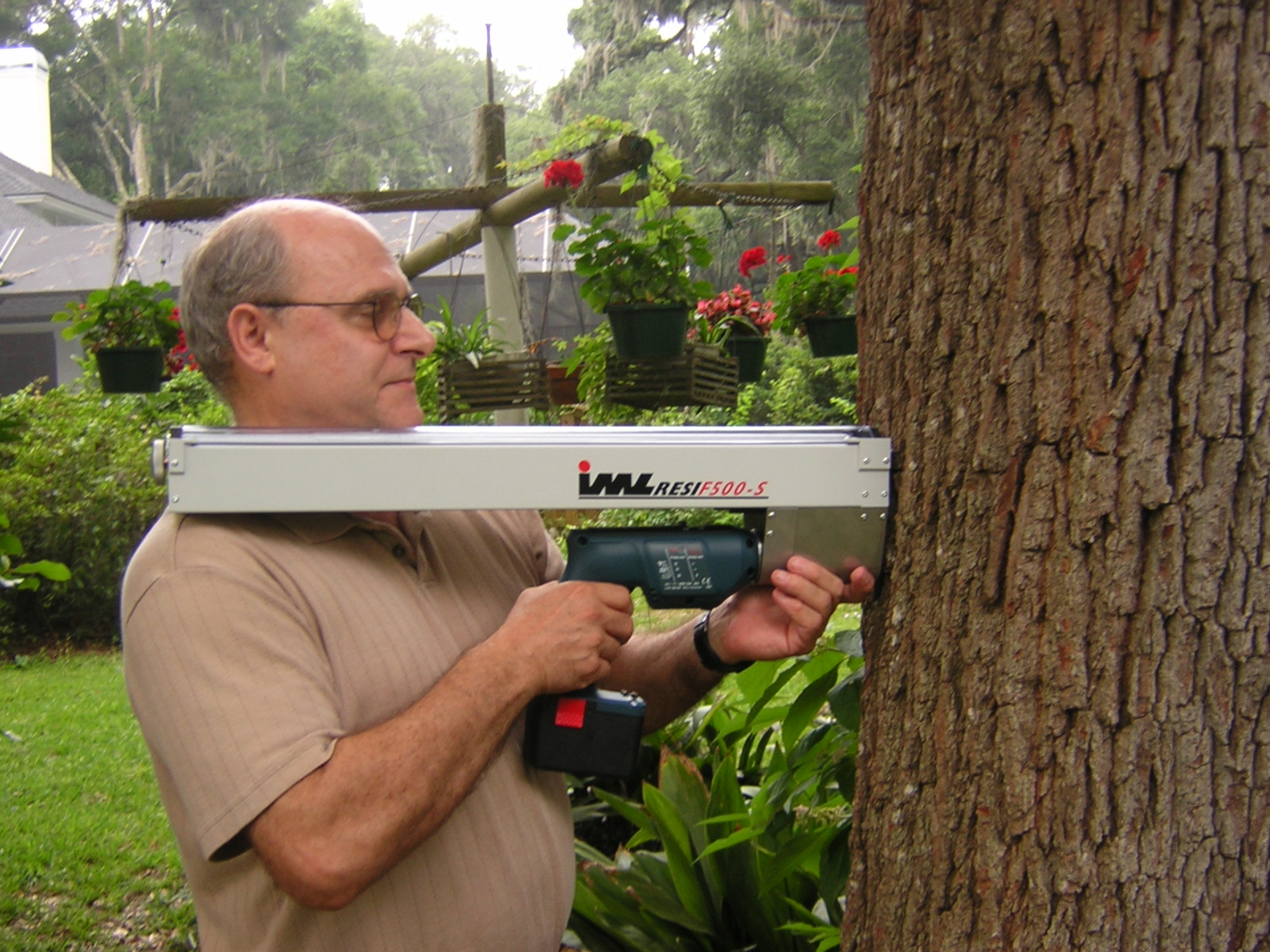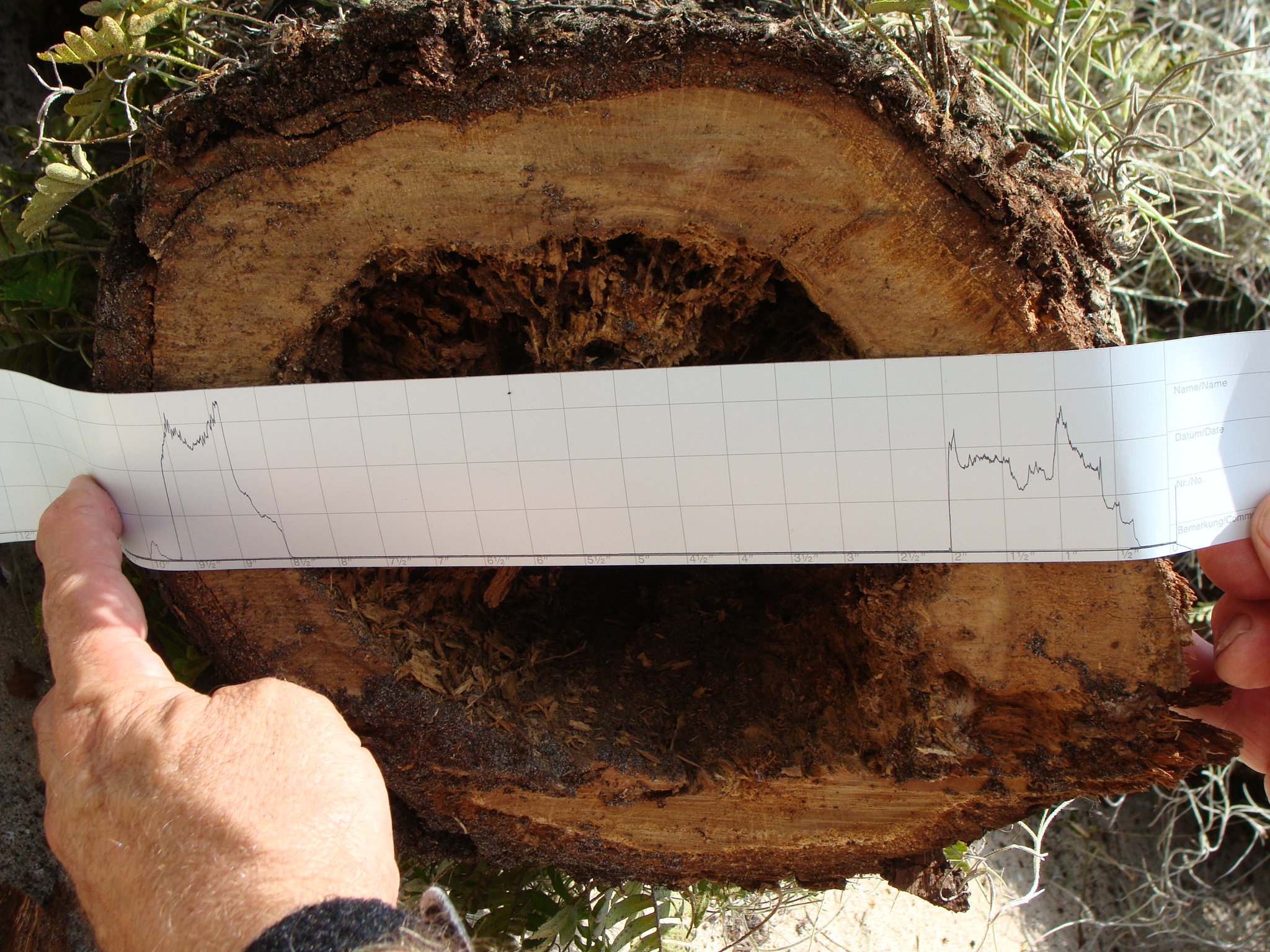Assessing Tree Risk
All trees have the potential to fail but fortunately few trees do. Trees can have defects. Most trees do. The key is being able to evaluate the defect and the likelihood of failure and take remedial action if necessary. Removal is the last resort.
When we do a tree risk assessment, we follow the protocol in the ANSI A300 Tree Risk Assessment Standards and the companion publication Best Managment Practices in Tree Risk Assessment. We generally perform a Level 2 Basic Visual Assessment which includes a detailed visual inspection of a tree and its surrounding site. The tree buttress roots, trunk and branches are checked and we walk completely around each tree sounding the lower trunk with a rubber mallet to check for internal decay or hollows.We check both the tree health and tree structure, which are two separate conditions. When additional

information is needed and the client approves the additional service, we perform a Level 3 Advanced Assessment which can include a root crown inspection with an Air Spade soil excavation device, a resistance drill, aerial inspection or other advanced techniques.
I have noticed a disturbing trend where certified arborists, especially those who have recently passed the ISA certification exam, are condemning large veteran trees for removal because of a defect. Such a defect-phobic trend does not serve the community or the trees we should protect. Tree removal should be the treatment of last resort only after considering a full range of mitigation treatments.
Detecting Decay

Sometimes decay in a tree trunk or branch is readily visible. Other times it is not. And even when decay is visible through an opening or old pruning wound, it is difficult to determine how extensive the decay is.

I use the latest technology, the resistance drill, that can accurately measure decay. Using the Resistograph is only slightly invasive to the tree but the procedure is important if substantial decay or potentially hazardous conditions exist.
It is important to remember that all mature trees have some decay. It is the location of the decay, the extent of the decay and the tree species that determine the risk factor. One must also consider the size of the part of the tree that can fail and the target– people or property that can be hit if the tree fails.

Signs That a Tree MAY Be Hazardous

A single sign or symptom listed below does not necessarily mean a tree is at high risk of failure. Sometimes a tree can have multiple defects and still not be at high risk of failure. It depends on many factors. If you see any of the signs and symptoms, have the tree checked by an ISA Certified Arborist. If you want an independent opinion on risk, let the arborist know up front he or she will not be hired to remove or prune the tree or hire an arborist who works only as a consultant and does not have any connection with a tree service.
- Numerous Dead limbs
- Thin crown (low vigor)
- Forked trunks
- Fungus on or at the base of the trunk or large limb
- A cavity or other sign of decay
- Wounds or cracks
- Cankers
- Sudden leaning
- Construction activity nearby in the last five to 20 years
- History of failure such as previous limb drop
- Species prone to failure — laurel oak, water oak, maples, for example
- Severe pruning history — has the tree been topped, lion-tailed or otherwise heavily pruned
- Adjacent trees removed — has there been clearing of other trees nearby

Not all large trees are good neighbors
This heavily decayed laurel oak had a double leader and leaned over a corner bedroom. The tree was over 70 ft. tall and the trunk was nearly 6 ft. across at the widest part. The trunk exhibited no outward signs of decay. But testing with a mallet followed by drilling with the Resistograph quickly showed the extent of the problem. A tree service was called and the tree was quickly removed.
Large, old laurel oaks and water oaks tend to have this decay problem. So if you have a large over-mature laurel oak or water oak within falling range of your home, have it checked regularly.
It is important to note that the amount of decay shown in the above photo but in a live oak could be acceptable considering target and other structural factors. Tree species must be considered when evaluating risk.

Tree Hazard Links that may be of interest
How to recognize tree hazards by Chuck Lippi (This article was published July 10, 2004 in the Home & Garden Section of the Daytona News-Journal) Click here to see that article
For a Tree City USA bulletin on How to Recognize – and Prevent – Hazard Trees, click here.
For a good webpage showing various hazardous tree conditions by Steve Nix of About.com:Forestry, click here.